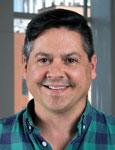At the Academy holiday party I found myself in a conversation about rural healthcare with our board president, Tim Size. Because Tim works as the director of a rural healthcare cooperative, he is keenly aware of disparities between rural and urban communities when it comes to healthcare access and affordability.
As I recounted stories about the farming community where I grew up, I noticed his eyebrows rise. Tim chided me, “Did you realize that you prefaced what you said with the phrase, ‘I grew up in the middle of nowherew It’s not nowhere—especially for the people who live there.”
Even if I hadn’t meant to denigrate my experience of growing up in unincorporated Lind Township, my comment implied that a rural community is defined only by its proximity to a city or town. In doing so, I had dismissed the richness of my childhood experience: Mom and Dad’s drafty old farmhouse and sweet-smelling barn, tranquil forests and marshes in which I wandered without care or concern, friends and neighbors who made me what I am today.
Embarrassed, I apologized to Tim and made a mental note to never again use that phrase—and try to remember what I value most about the place I still call home.
Working with photographer and author Richard Quinney on “Elegy for a Family Farm,” I was reminded how our connections to the places we call home transcend easy categorization and are often wrought with contradiction. But this doesn’t make these connections any less meaningful or powerful.
In this issue, there are many examples of what we value most about the landscape that defines our common experience, that makes Wisconsin our home. Look for them along a quiet road outside Blanchardville, between the apple trees of Ela Orchard, on a narrow strip of land between two lakes, at an old farmhouse in the middle of somewhere.




